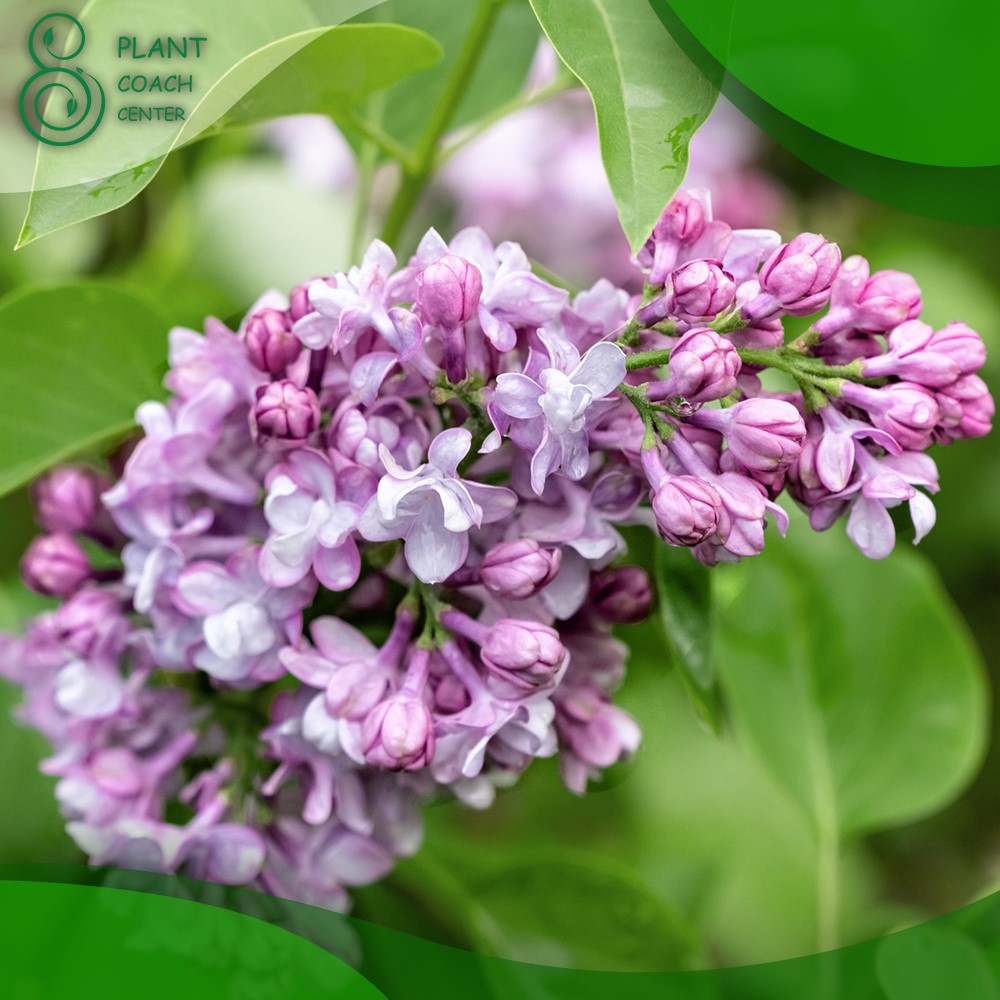When To Cut Back Milkweed
Meta description: Discover the secrets of when and how to cut back milkweed plants to cultivate thriving habitats for butterflies while unleashing the beauty of nature’s delicate dance.
Milkweed plants belonging to the Asclepias genus are a crucial ecosystem component. These fascinating plants play a vital role in supporting the life cycle of monarch butterflies and provide essential habitat and food sources for many other pollinators. In this comprehensive guide, we will explore the topic of “When to Cut Back Milkweed” to help you maintain healthy and thriving milkweed patches while supporting the conservation efforts of these beautiful creatures.
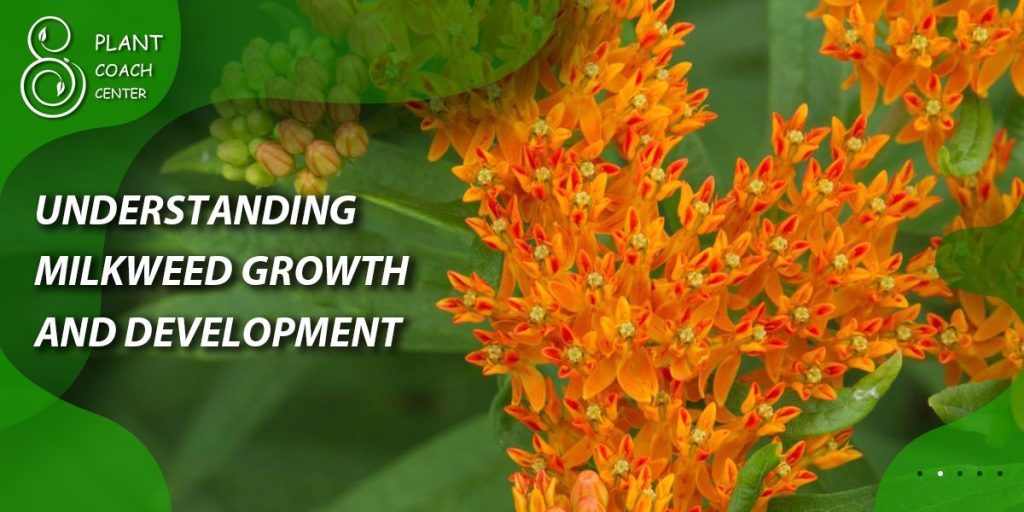
Understanding Milkweed Growth and Development
Life Cycle of Milkweed Plants
Milkweed plants undergo a distinct life cycle, from germination and seedling growth to flowering and seed production. Understanding this life cycle is key to determining the appropriate time for cutting back milkweed. It typically takes two to three years for milkweed plants to reach their full maturity, and they can live for several decades under suitable conditions.
Different Varieties of Milkweed
There are various milkweed species, each with its unique characteristics. Common Milkweed (Asclepias syriaca), Butterfly Weed (Asclepias tuberosa), and Swamp Milkweed (Asclepias incarnata) are among the most popular varieties. Each species has specific growth patterns, flowering times, and cutting-back requirements.
Factors Affecting Milkweed Growth
Several factors influence the growth and development of milkweed. These include sunlight, temperature, soil conditions, and water availability. Considering these factors is essential when determining the optimal timing for cutting back milkweed.
Benefits of Cutting Back Milkweed
Promoting Healthy Growth
Regularly cutting back milkweed plants can significantly promote healthy growth. Removing old and spent foliage allows the plants to redirect their energy toward producing fresh leaves and flowers. This process stimulates new shoots, leading to more vigorous growth and a denser, healthier plant overall. Cutting back also helps prevent the milkweed patch from becoming overcrowded, ensuring each plant has sufficient space and resources to thrive.
Controlling Spreading and Invasive Behavior
Some milkweed species, such as Common Milkweed (Asclepias syriaca), spread aggressively and can become invasive in certain regions. Cutting back these milkweed varieties effectively controls their growth and prevents them from dominating your garden or natural areas. Regularly pruning and removing excess growth can keep the milkweed population in check, allowing other native plants to coexist and maintain biodiversity.
Encouraging Monarch Butterfly Habitat
Cutting back milkweed at the appropriate time can have a direct positive impact on monarch butterflies. Monarchs rely on milkweed as their primary food source during their caterpillar stage. By cutting back the plants, you encourage the growth of fresh, young shoots that are more nutritious and attractive to monarch caterpillars. Providing ample tender foliage for the caterpillars ensures their healthy development. It increases the chances of successful metamorphosis into adult butterflies. Ultimately, maintaining a well-managed milkweed habitat through pruning supports the conservation efforts for monarch butterflies, which face significant migration and breeding challenges.
Cutting back milkweed offers several benefits, including promoting healthy growth, controlling invasive behavior, and creating a favorable habitat for monarch butterflies. By employing proper pruning techniques and timing your cuts strategically, you can maintain a thriving milkweed patch while supporting the broader ecological balance and conservation efforts.
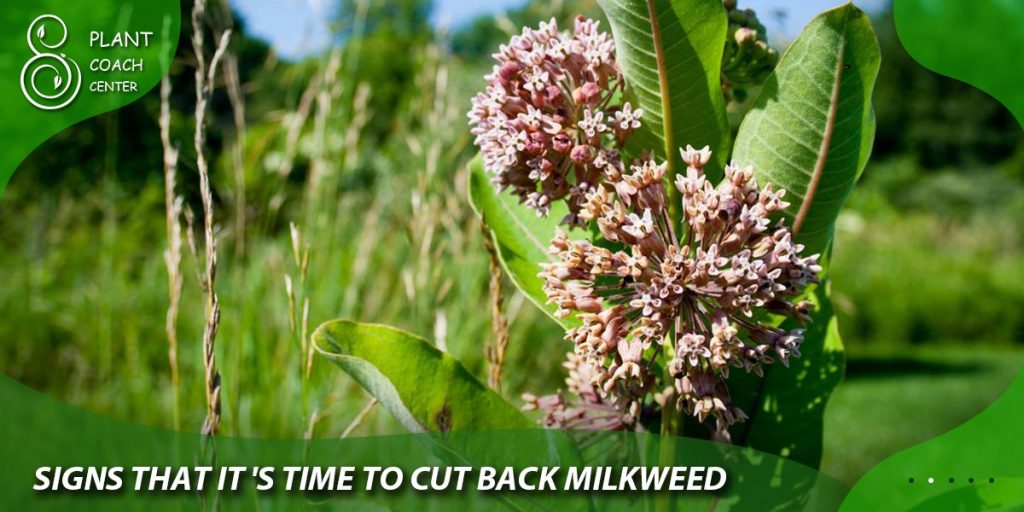
Signs That It’s Time to Cut Back Milkweed
Overgrown Appearance
One of the clear signs that it’s time to cut back milkweed is when the plants start to look overgrown. Over time, milkweed plants can become tall and leggy, with sparse foliage and elongated stems. This overgrowth is often a result of the plants directing their energy toward seed production rather than healthy vegetative growth. When milkweed becomes overgrown, it can negatively impact the overall health and aesthetics of the patch. Cutting back the plants helps rejuvenate them by removing old and tired growth and stimulating fresh, new shoots.
Stunted Growth or Yellowing Leaves
Stunted growth or yellowing leaves on milkweed plants indicate cutting them back is time. These signs may suggest nutrient deficiencies, pest infestations, diseases, or unfavorable growing conditions. By cutting back the milkweed, you can address these issues and allow the plants to redirect their energy toward regrowth and recovery. Removing diseased or pest-infested parts of the plant during pruning can help prevent the spread of pathogens and pests, promoting overall plant health.
Flowering and Seed Pod Considerations
The flowering and seed pod development stage of milkweed plants can influence the timing of cutting back. If you wish to enjoy the beautiful blooms of milkweed, provide nectar for butterflies, or collect seeds for future propagation, it’s important to consider the flowering stage.
Some milkweed species, like Butterfly Weed (Asclepias tuberosa), flower later in the season. In such cases, it is best to wait until after the flowering period to cut back the plants, allowing them to complete their blooming cycle and maximize their contribution to pollinators. However, suppose you prioritize plant health and maintenance over flowering. In that case, you can still proceed with cutting back even during the flowering stage.
By paying attention to these signs, you can determine the optimal time to cut back milkweed. Doing so ensures that the plants maintain a healthy and robust appearance, encourage new growth, address any underlying issues, and support the long-term health of the milkweed patch. It’s essential to balance enjoying the plants’ beauty, supporting pollinators, and maintaining their overall vitality through timely and appropriate pruning.
Best Practices for Cutting Back Milkweed
Timing Considerations
- Seasonal Timing: Spring, Summer, or Fall?
The ideal time to cut back milkweed depends on your goals and the specific milkweed species. In general, before new growth emerges, late winter or early spring is a suitable time for cutting back most milkweed varieties. However, for species that flower later in the season, such as Butterfly Weed, it is best to wait until after flowering to avoid interrupting the blooming process. Fall is generally not recommended for cutting back milkweed, as it may disrupt overwintering habitat and the natural seed dispersal process.
- Considering the Region and Climate
Regional climate variations can influence the growth patterns of milkweed. If you live in a colder climate, it’s important to adjust the timing of cutting back accordingly, ensuring the plants have enough time to recover before winter. Conversely, in warmer climates, you may need to account for the extended growing season and adjust the pruning schedule accordingly.
Tools and Techniques for Pruning Milkweed
- Choosing the Right Tools
When cutting back milkweed, using clean and sharp pruning tools to minimize plant damage is important. Secateurs or sharp garden shears are suitable for most milkweed varieties. However, a pruning saw may be necessary for larger or more mature plants.
- Pruning Techniques for Optimal Results
Start by removing dead, damaged, or diseased stems and foliage. Then, selectively trim back any leggy or overcrowded branches to promote air circulation and new growth. Aim to maintain an even and balanced shape while avoiding excessive pruning, which could harm the plant.
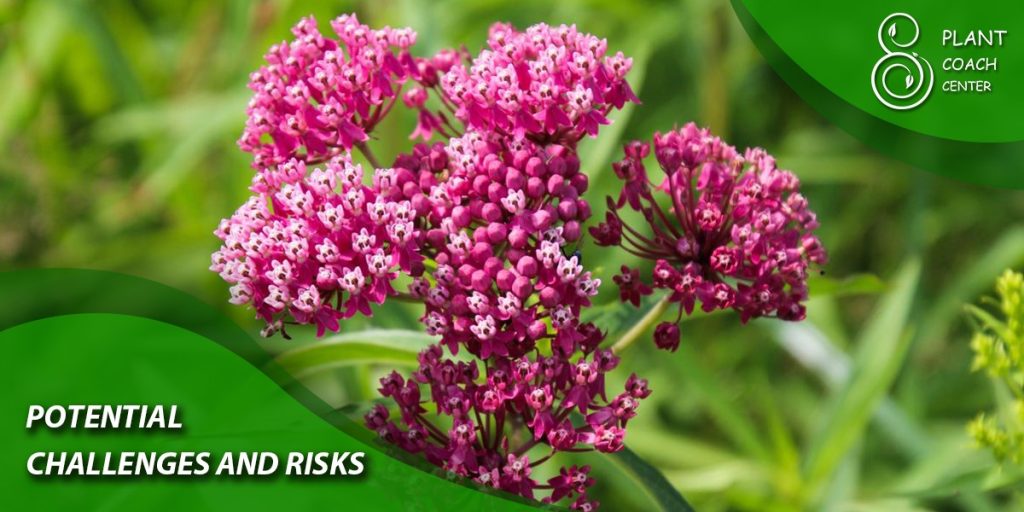
Potential Challenges and Risks
Potential Impact on Monarch Butterflies
One of the primary concerns when cutting back milkweed is the potential impact on monarch butterflies. Monarchs rely on milkweed as their exclusive larval food source, and any disruption to their habitat can affect their life cycle and survival. Therefore, before pruning, it’s crucial to be mindful of monarch eggs, caterpillars, or chrysalises on the milkweed plants. Avoid cutting back stems hosting monarch eggs or larvae to ensure uninterrupted development. By being observant and cautious, you can minimize any adverse impacts on monarch butterflies while maintaining the milkweed patch’s health.
Preventing Disease and Pests
Cutting back milkweed can inadvertently expose the plants to potential diseases and pests. When pruning, using clean and sanitized tools is important to avoid spreading pathogens between plants. Inspect the plants carefully for any signs of disease, such as leaf spots, discoloration, or wilting.
Promptly address any issues you encounter by removing infected plant parts and taking appropriate measures, such as applying organic disease control methods. Additionally, watch for common milkweed pests like aphids or bugs and take necessary steps to control their populations.
Dealing with Invasive Varieties
While milkweed generally benefits the environment, some species can exhibit invasive behavior in certain regions. Invasive milkweed varieties, such as Tropical Milkweed (Asclepias curassavica), have the potential to outcompete native plants and disrupt local ecosystems. If you choose to grow an invasive milkweed species, being vigilant about containment is essential.
Cutting back invasive milkweed must be done with extra caution to prevent unintentional spread. Consider using physical barriers, such as root barriers, or practicing vigilant management techniques to control the growth and spread of invasive milkweed.
By being aware of these potential challenges and risks associated with cutting back milkweed, you can take appropriate precautions and mitigate any negative impacts. With proper care and management, you can enjoy the benefits of milkweed while minimizing potential disruptions to monarch butterflies and maintaining a healthy and balanced ecosystem.
Specific Instructions for Cutting Back Different Milkweed Varieties
Common Milkweed (Asclepias syriaca)
- Cutting Back Techniques
- Wait until early spring, just before new growth emerges.
- Remove any dead or damaged stems at ground level.
- Trim back leggy stems to promote bushier growth.
- Potential Issues and Precautions
- Be aware of the milky sap, which can irritate the skin or eyes.
- Watch out for monarch eggs or larvae and avoid cutting back stems hosting them.
Butterfly Weed (Asclepias tuberosa)
- Cutting Back Techniques
- Wait until after flowering to cut back Butterfly Weed.
- Remove spent flower heads and trim back leggy stems.
- Potential Issues and Precautions
- Cutting back too early may interrupt the blooming process.
- Monitor for any signs of pests or diseases and take appropriate action.
Swamp Milkweed (Asclepias incarnata)
- Cutting Back Techniques
- Cut back in early spring before new growth emerges.
- Remove dead or damaged stems and thin out overcrowded areas.
- Potential Issues and Precautions
- Look for any signs of moisture-related diseases, particularly in wetter regions.
- Avoid cutting back plants hosting monarch eggs or larvae.
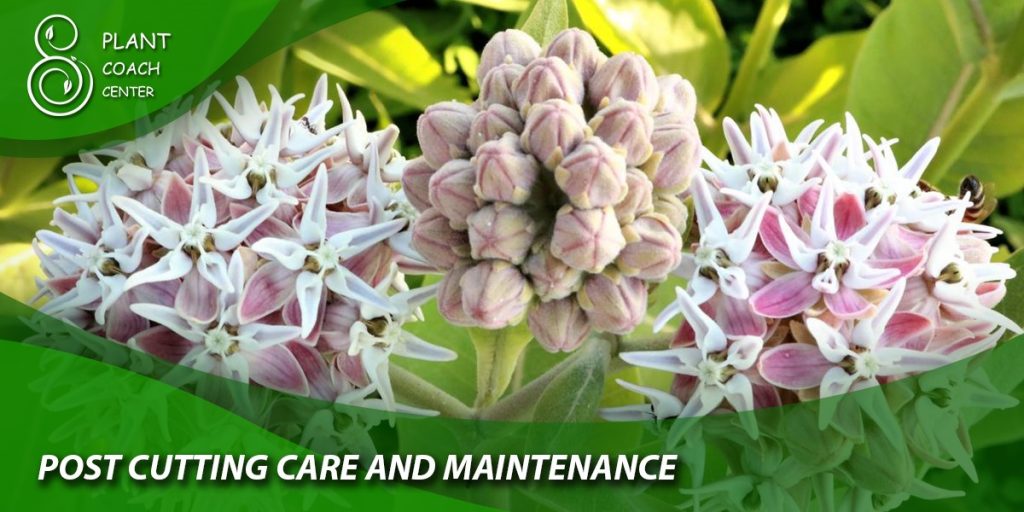
Post-Cutting Care and Maintenance
Watering and Fertilizing After Pruning
After cutting back milkweed, ensure that the plants receive adequate water to support their recovery. Water deeply but infrequently, allowing the soil to dry out slightly between waterings. Avoid overwatering, as excessive moisture can lead to root rot. Depending on your soil’s nutrient needs, you may consider applying a balanced organic fertilizer to provide essential nutrients for healthy regrowth.
Mulching and Weed Control
Apply a layer of organic mulch around the base of the milkweed plants to help retain moisture, suppress weed growth, and provide insulation to the roots. Use a mulch that allows for air circulation and prevents excessive moisture buildup, such as wood chips or straw. Regularly inspect the mulch for any signs of pests or disease and replace it as needed.
Monitoring Regrowth and Health
Keep a close eye on the regrowth of the milkweed plants after cutting back. Monitor for signs of stress, such as wilting, yellowing leaves, or pest infestations. Promptly address any issues, including providing additional support, adjusting watering practices, or implementing pest control measures.
Final words
By understanding the growth patterns, benefits of cutting back, and best practices for milkweed maintenance, you can successfully manage your milkweed patch while supporting the well-being of monarch butterflies and other pollinators. Remember to time your pruning appropriately, use proper techniques, and monitor the regrowth and health of the plants. With careful attention, you can create a thriving milkweed habitat and contribute to the conservation efforts of these remarkable creatures.
Remember, by incorporating these practices into your gardening routine, you can strike a balance between maintaining the health of your milkweed plants and providing valuable resources for monarch butterflies. Enjoy the beauty of milkweed while supporting the intricate web of life in your garden. Happy gardening!
Can cut back milkweed harm monarch butterflies?
When done mindfully, cutting back milkweed can benefit monarch butterflies by promoting healthier growth.
How often should I cut back milkweed?
Yearly or biennial pruning in early spring is generally sufficient to maintain healthy milkweed plants.
Will cutting back milkweed kill it?
When done correctly, cutting back milkweed stimulates new growth and extends the plant's lifespan.


